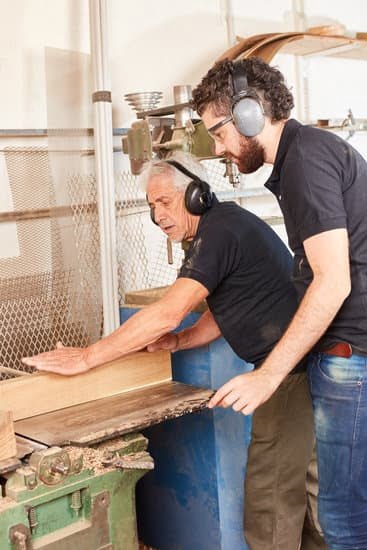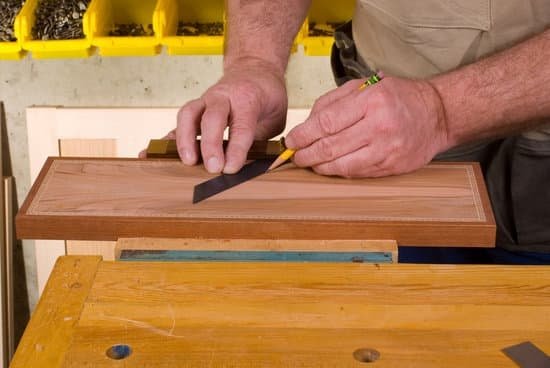Are you wondering what epoxy to use for woodworking? Epoxy resin is a versatile and durable material commonly used in woodworking projects.
From filling gaps and cracks to creating a glossy finish, epoxy resin has a wide range of applications in the woodworking industry.
In this article, we will explore the different types of epoxy resins used in woodworking, factors to consider when choosing epoxy for woodworking projects, a step-by-step guide on how to use epoxy for woodworking projects, common mistakes to avoid when using epoxy, tips for achieving a professional finish with epoxy in woodworking, and safety precautions when working with epoxy.
Epoxy resins are synthetic polymers that are known for their adhesive properties and resistance to heat, chemicals, and moisture. When used in woodworking, epoxy resin can enhance the strength and durability of wood while also adding aesthetic value. There are various types of epoxy resins available in the market, each with its own unique characteristics and applications in woodworking.
When choosing the right epoxy for your woodworking project, it is important to consider several factors such as the type of wood being used, the specific application or purpose of the epoxy, curing time, and desired finish. By understanding these factors and following best practices for using epoxy resin in woodworking projects, you can achieve professional results while avoiding common mistakes that may compromise the quality of your work.
Different Types of Epoxy Resins Used in Woodworking
Epoxy resins are a popular choice for woodworking projects due to their strength, durability, and ability to create a crystal-clear finish. There are several types of epoxy resins commonly used in woodworking, each with its own unique properties and applications. Here are some different types of epoxy resins used in woodworking:
1. Casting Epoxy: This type of epoxy resin is designed for pouring into molds to create decorative or functional objects such as river tables, jewelry, and art pieces. It typically has a longer curing time and can be poured in thicker layers without overheating.
2. Laminating Epoxy: Laminating epoxy is formulated for bonding layers of wood together, such as when creating laminated wooden bows or knife handles. It has a thin consistency that allows for easy application and excellent penetration into the wood fibers.
3. Coating Epoxy: Coating epoxy is specifically designed for coating surfaces such as tabletops, bar tops, and cutting boards. It provides a high-gloss finish and excellent protection against moisture, heat, and scratches.
When choosing the right epoxy resin for your woodworking project, it’s important to consider the specific requirements of the project, such as the desired finish, working time, curing time, and temperature resistance. Additionally, considering the type of wood you will be working with is crucial since different woods have varying levels of porosity that can affect how the epoxy adheres and cures. Researching these factors will help you select the most appropriate epoxy resin for your specific woodworking needs.
Factors to Consider When Choosing Epoxy for Woodworking Projects
When choosing epoxy for woodworking projects, it is important to consider a few key factors to ensure the best results. One of the main considerations is the type of epoxy resin that will be most suitable for the specific project at hand. There are several different types of epoxy resins used in woodworking, each with its own unique characteristics and uses.
Another important factor to consider when choosing epoxy for woodworking projects is the curing time. Some epoxy resins cure quickly, while others take more time to set and harden. Understanding the project timeline and how much working time you need before the epoxy sets is crucial in making the right choice.
Additionally, it’s essential to think about the clarity and color of the epoxy resin. For some woodworking projects, a clear or translucent epoxy is desired to maintain visibility of any embedded objects, such as wood pieces or decorative elements. In other cases, pigmented or tinted epoxies may be preferred to add color and visual interest to the finished piece.
Considering these factors will help ensure that you choose the right epoxy resin for your woodworking projects, allowing you to achieve professional results with ease.
| Factors to Consider | Consideration |
|---|---|
| Type of Epoxy Resin | Different types available with unique characteristics |
| Curing Time | Understanding project timeline and working time needed |
| Clarity and Color | Choosing clear or colorful options based on project requirements |
Step-by-Step Guide on How to Use Epoxy for Woodworking Projects
Surface Preparation
Before using epoxy for woodworking projects, it is crucial to ensure that the wood surface is properly prepared. This includes sanding the surface to remove any rough spots or imperfections and cleaning the area to ensure there is no dust or debris present. In addition, it is important to make sure the wood is completely dry before applying epoxy.
Mixing the Epoxy
Once the surface is prepared, it’s time to mix the epoxy resin. Be sure to follow the manufacturer’s instructions carefully when mixing the epoxy. It is essential to achieve the right ratio of resin and hardener for the best results. Take your time and mix thoroughly to avoid any issues with curing.
Applying the Epoxy
After mixing, apply the epoxy to the wood surface using a brush or spreader tool. Make sure to spread it evenly and work quickly, especially if you are working with a fast-curing epoxy. If you’re working on a large project, consider applying in sections to ensure proper coverage and minimize drips or uneven surfaces. Allow sufficient time for curing according to the manufacturer’s instructions before handling or moving the project.
These steps provide a basic overview of how to use epoxy for woodworking projects, but always refer back to specific product guidelines for best results. When choosing what epoxy to use for woodworking, consider factors like curing time and clarity based on your specific project needs and desired outcome.
Common Mistakes to Avoid When Using Epoxy for Woodworking
When working with epoxy for woodworking projects, it’s important to be aware of some common mistakes that can occur. These mistakes can not only lead to unsatisfactory results but can also be detrimental to the overall quality and durability of the finished project. By being mindful of these potential pitfalls, you can ensure that your woodworking projects using epoxy resin are successful and long-lasting.
Not Following Mixing Ratios
One common mistake when using epoxy for woodworking is not following the correct mixing ratios. Epoxy resins typically require precise measurements and mixing of the resin and hardener in order to properly cure and achieve maximum strength. Failing to follow the recommended mixing ratios can result in an incomplete cure, weak bond, or a sticky, tacky finish.
Applying Epoxy in Inconsistent Temperatures
Another mistake to avoid is applying epoxy in inconsistent temperatures. Fluctuations in temperature can affect the curing process of epoxy resin, potentially leading to issues such as bubbles, cracking, or improper adhesion to the wood surface. It’s important to work in a controlled environment with stable temperatures when using epoxy for woodworking projects.
Not Sanding Between Layers
If you’re applying multiple layers of epoxy on your woodworking project, one mistake to avoid is not sanding between layers. Failing to sand between layers can result in a lack of adhesion between coats, leading to delamination and an uneven finish. It’s crucial to sand each layer of cured epoxy before applying the next one to ensure a strong bond and a smooth, professional-looking result.
Tips for Achieving a Professional Finish With Epoxy in Woodworking
When using epoxy for woodworking projects, achieving a professional finish is essential to deliver high-quality, long-lasting results. Whether you are filling cracks, creating decorative inlays, or coating a surface, the application of epoxy requires precision and attention to detail. Here are some tips to help you achieve a professional finish with epoxy in woodworking:
- Proper Surface Preparation: Before applying epoxy, it is crucial to ensure that the wood surface is clean, dry, and free from any dust or debris. Sand the wood to create a smooth surface and remove any existing finish or coating that may interfere with the adhesion of the epoxy.
- Use the Right Epoxy: Choosing the right type of epoxy resin for your woodworking project is crucial. For example, if you are working on an outdoor project, look for an epoxy that offers UV resistance to prevent yellowing and degradation from sun exposure. It’s also important to consider the working time and cure time of the epoxy based on the specific needs of your project.
- Application Techniques: When applying epoxy to wood, it’s important to follow proper application techniques to achieve a professional finish. Apply the epoxy in thin, even coats using a brush or spreader tool. Consider using multiple thin layers rather than one thick layer to avoid sagging or uneven curing.
By following these tips and choosing the right epoxy for your woodworking project, you can achieve a professional finish that enhances the natural beauty of wood while providing durable protection for years to come.
Safety Precautions When Working With Epoxy in Woodworking
In conclusion, choosing the right epoxy for woodworking is essential to achieving professional and long-lasting results. As discussed in this article, there are several types of epoxy resins available, each with its own advantages and considerations. It’s important to consider factors such as working time, curing time, and color options when selecting the appropriate epoxy for a woodworking project.
Furthermore, following a step-by-step guide can help woodworkers use epoxy effectively and avoid common mistakes that may compromise the quality of their work. By taking the time to properly prepare the wood surface, mix the epoxy thoroughly, and apply it evenly, woodworkers can achieve a professional finish that enhances the beauty and durability of their projects.
Lastly, safety precautions should never be overlooked when working with epoxy in woodworking. Proper ventilation, protective gear, and safe handling practices are crucial to prevent health hazards associated with epoxy resin.
It’s important for woodworkers to prioritize their well-being while pursuing their craft.Overall, understanding what epoxy to use for woodworking and how to work with it safely can lead to successful outcomes in woodworking projects. With careful consideration of the type of epoxy needed for specific applications, attention to detail during the application process, and a commitment to safety measures, woodworkers can create stunning pieces that stand the test of time.
Frequently Asked Questions
What Kind of Epoxy Do You Use for Wood Turning?
When using epoxy for wood turning, it’s important to choose a high-quality epoxy resin specifically designed for wood. Look for a product that is transparent and has a low viscosity, as this will make it easier to work with and ensure a smooth finish on your turned wood projects.
Can You Apply Epoxy Directly to Wood?
Yes, epoxy can be applied directly to wood. However, it’s crucial to properly prepare the wood surface by sanding it and removing any dust or debris. Additionally, some woods may require a sealant or primer before applying the epoxy to ensure better adhesion and prevent discoloration.
What Is the Best Epoxy Resin for Wood Signs?
The best epoxy resin for wood signs is typically a clear, UV-resistant formula that provides a durable finish and enhances the natural beauty of the wood.
It’s important to choose a resin that is specifically designed for outdoor use if you’re creating signs meant for exterior display, as these formulations are better equipped to withstand harsh environmental conditions.

Hi everyone! I’m a woodworker and blogger, and this is my woodworking blog. In my blog, I share tips and tricks for woodworkers of all skill levels, as well as project ideas that you can try yourself.





